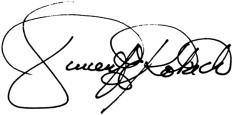Now that I am in my third year as editor-in-chief of the AJO-DO , I have noticed a disturbing trend. Increasing numbers of manuscripts submitted for peer review and possible publication in the Journal have greater than 5 or 6 authors. In fact, we received a submission this past year with 15 authors. Did each of those 15 authors play a significant role in the research, analysis, or writing of the manuscript? Probably not. Why were they included? To gain recognition. Is this appropriate? Certainly not. What should the AJO-DO do to ensure that those listed as authors actually contributed significantly to the project? Let me explain our future approach to this dilemma.
Guidelines do exist for authorship. The International Committee of Medical Journal Editors (ICMJE), to which the AJO-DO belongs, provides strict but reasonable criteria for justifying authorship. According to the ICMJE, an author is generally considered to be someone who has made substantive intellectual contributions to a published study. How does the ICMJE define substantive contribution? Specifically stated, authorship credit should be based on 3 responsibilities: (1) substantial contributions to conception and design, acquisition of data, or analysis and interpretation of data; (2) drafting the article or revising it critically for important intellectual content; and (3) final approval of the version to be published. Furthermore, the ICMJE states that each author should meet all 3 of these criteria.
What does not qualify a person as an author? The following roles in a research project do not necessarily constitute authorship: (1) acquisition of funding, (2) collection of data, (3) providing the sample for a study, (4) general supervision of the research group, and (5) being department chairperson of the unit that performed the research. These auxiliary roles might be important in conducting a research project, but they do not justify the listing as an author. How should these auxiliary roles be recognized? All contributors who do not meet the criteria for authorship should be listed in the acknowledgments at the end of the article. Examples are persons who provided purely technical help or writing assistance, or a department chairperson who provided only general support.
Personally, I agree with all of these criteria and guidelines. Therefore, it is my goal to ensure that the authors listed in the articles published in the AJO-DO in the future have complied with these criteria. How have other journals ensured that each person listed as an author has actually participated at a sufficient level in the research project or in producing the manuscript? A journal entitled Head & Face Medicine adds a paragraph in smaller type after the last paragraph of the article called “Authors’ contributions.” In this paragraph, the authors are designated by their initials, followed by their specific responsibilities in producing the article: eg, RB participated in the design of the study and prepared the manuscript, KG performed the histologic study, NP performed the clinical study, and HM helped with the statistical analysis. A similar section entitled “Acknowledgments” lists persons who made minor contributions to the project.
I like this method of distinguishing between authors and contributors. Therefore, the AJO-DO will adopt this protocol beginning with the articles to be published in the January 2014 issue. Let me be absolutely clear. We are not planning to limit the number of authors. However, if the contribution of a designated author does not meet the criteria established by the ICMJE and described in this editorial, then we will ask the corresponding author to remove that person’s name from the list of authors and to recognize his or her contribution in the “Acknowledgments” section at the end of the article.
Our goal is to list authorship in a fair and responsible manner. By requiring each author to designate his or her specific contribution to the research project, you will know exactly who made a substantive contribution and who should be listed as a legitimate author of each article that we publish in the AJO-DO . Therefore, you will not have to ask, “Will the real authors please identify themselves.”





